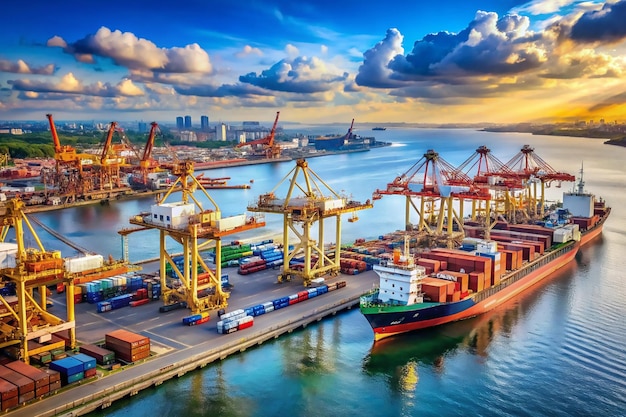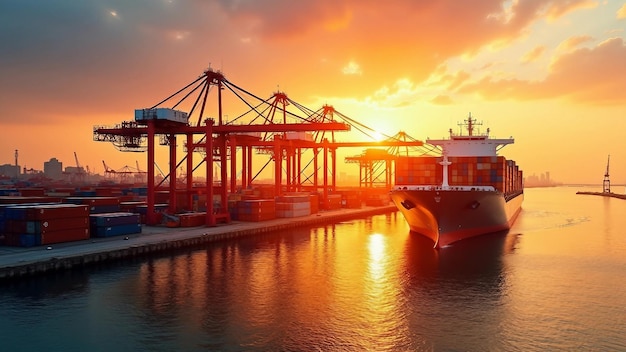Introduction

Setting up your business and finding a reliable supplier are essential first steps in importing goods. But the key question remains: How do you get your products from China to your Western market in the most efficient and cost-effective way? With numerous shipping options available, each with its pros and cons, making the right choice can be overwhelming.
This guide explores different shipping methods from China to Western countries, offering insights on how to choose the best option for your business, manage shipping costs, and ensure smooth logistics. Whether you’re a seasoned importer or just starting, UnionSource Global is here to help you navigate the complexities of shipping.
Sea Freight: Cost-Effective for Large Orders
Sea freight is a widely-used option for shipping goods, especially for larger shipments. China’s ports—like Shanghai, Ningbo, and Shenzhen—are some of the busiest in the world, offering extensive shipping routes to Western countries.
Pros:
- Affordability: Sea freight is the cheapest option for large shipments, particularly when the cargo weighs over 100kg or measures more than 1 cubic meter (cbm). It can be up to 4-6 times cheaper than air freight.
- Capacity: Perfect for bulk goods that don’t need fast delivery.
Cons:
- Slower Shipping: Expect a delivery time of 4-8 weeks. It’s best for non-urgent goods.
- Weather-Dependent: Delays can occur due to weather conditions.
Tip:
For cost-effectiveness, consider shipping Full Container Loads (FCL) instead of Less than Container Loads (LCL). LCL shipments often involve additional fees and delays due to consolidation.
Rail Freight: A Balanced Option
If you need a middle ground between fast air freight and affordable sea freight, rail freight is a solid choice. Rail lines connect China to many parts of Europe, offering a relatively quick and reliable method of transport.
Pros:
- Eco-Friendly: Rail freight has a lower environmental impact than air or sea.
- Moderate Speed: Delivery takes about 18-25 days.
Cons:
- Limited Routes: Rail freight is primarily available to European countries, with fewer options for the Americas.
Road Freight: Flexible Door-to-Door Service
Road freight provides flexibility, especially for door-to-door delivery across certain regions. While not as widely available for international routes, it’s often part of a multimodal shipping solution (combined with air or sea).
Pros:
- Direct Delivery: Door-to-door service for added convenience.
- Moderate Speed: Delivery usually takes 14-21 days, depending on the distance.
Cons:
- Costs: Prices may vary significantly based on distance and routes.
Air Freight: Speed for Urgent Shipments
When speed is a priority, air freight is the best choice. It’s faster than both sea and rail, making it ideal for time-sensitive or medium-sized shipments.
Pros:
- Fastest Delivery: Usually within 5-10 days.
- Reliable: Fewer delays and less damage risk compared to other options.
Cons:
- Higher Cost: Air freight can be significantly more expensive, especially for heavier items.
- Restrictions: Certain products (e.g., magnets, aerosols) cannot be shipped by air.
Tip:
Air freight is most cost-effective for shipments between 200kg and 500kg. For anything heavier, sea freight may be a better option.
Express Shipping: Speed at a Premium
For the fastest shipping, express services (DHL, FedEx, UPS) deliver within 2-5 days. This option is suitable when you need a small quantity of goods urgently.
Pros:
- Fastest Shipping Available: Ideal for emergency stock or small, light shipments.
- Convenience: Full service, from pickup in China to delivery at your door.
Cons:
- High Cost: 50-60% more expensive than standard air freight.
Factors That Affect Shipping Costs
Several variables influence the cost of shipping goods from China to Western countries. To get an accurate estimate, consider these key factors:
- Type of Goods: Fragile or hazardous items may require special handling, increasing costs.
- Weight & Volume: Larger, heavier shipments will naturally cost more to transport.
- Shipping Method: Sea freight is cheaper but slower, while air and express options are more expensive.
- Destination: The further the destination, the higher the cost.
How to Save on Shipping Costs from China
Here are some practical tips to help you reduce shipping costs:
1. Plan Ahead
Book your shipments early to secure better rates. This also gives you time to shop around for the best freight forwarder. Avoid last-minute bookings, as these often incur premium charges.
2. Order in Bulk
Consolidating multiple orders into one large shipment is much more cost-effective. Large orders also qualify for FCL rates, which offer savings over LCL shipments.
3. Choose the Right Freight Forwarder
UnionSource Global works with local logistics partners in China to secure the best rates and smooth out the shipping process for our clients. Whether you need FOB (Free on Board) pricing or door-to-door delivery, we’ll help you choose the best option.
4. Optimize Packing & Get Insurance
Efficient packing reduces the volume your shipment occupies, which can lower your costs. Always ensure that your goods are insured, either through USG Sourcing or your local provider, to avoid losses.
Conclusion: Choose the Right Partner for Your Shipping Needs

Shipping from China to Western countries involves many factors, from choosing the right method to managing costs effectively. Whether you’re looking to ship large orders via sea freight or need fast air freight for urgent goods, USG Sourcing has the expertise and partnerships to help you navigate these challenges.
Have questions about shipping or need assistance with your import strategy? Drop a comment below, or contact us directly for a personalized consultation. We’re here to make your sourcing and shipping experience seamless!



